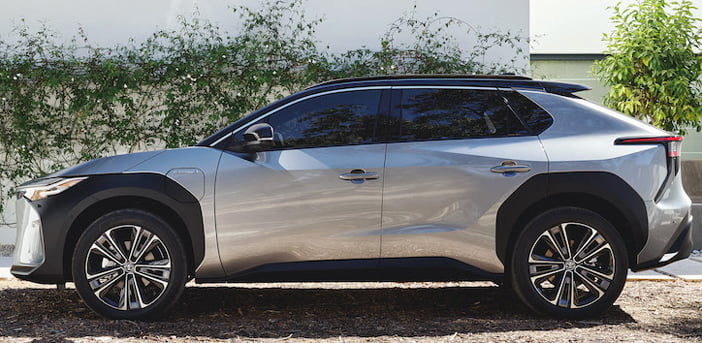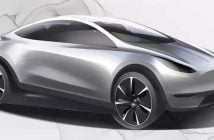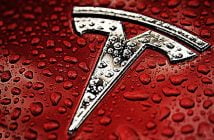+++ Contemporary Amperex Technology Limited (CATL) unveiled an electric-car BATTERY it said has a range of over 1.000 kilometers on a single charge and is 13% more powerful than one planned by Tesla, a major customer. CATL, as the world’s biggest maker of electric-car batteries is known, will start manufacturing the next-generation “Qilin” next year, according to a video the Chinese company streamed online Thursday. The battery charges faster than existing cells, and is safer and more durable, CATL said. The Qilin battery, named after a mythical Chinese creature, has an energy density of up to 255 watt-hour per kilogram, Ningde, Fujian-based CATL said. “It’s an important advancement for CATL as it keeps them at the forefront on the innovation side”, said Tu Le, managing director of Beijing-based consultancy Sino Auto Insights. “Being the lowest cost provider isn’t enough to command loyalty, there needs to be more to it and that seems to be the Qilin battery for CATL”. The company said Wednesday it raised 45 billion yuan ($6.7 billion) in a private placement of shares, with the proceeds intended for production and upgrade of lithium-ion battery manufacturing in four Chinese cities, as well as research and development. CATL has experienced a wave of volatility this year, grappling soaring prices of raw materials as well as rumors of trading losses. Its first-quarter net income slid 24% from a year earlier to 1.49 billion yuan. The company hasn’t explained a 1.79 billion yuan derivatives liability, the first such charge since it listed. +++
+++ BMW M boss Frank van Meel is determined to keep the manual gearbox on the options list for as long as possible and has been buoyed in his quest by 50% of orders for the BMW M2 requesting it. “From a technical viewpoint, there’s little reason to save it. It’s heavier, it’s slower and you get worse fuel consumption than the alternative. But the customer and the fanbase really love the manual. It gives a connection to allow them to demonstrate they can tame the beast, and that’s the point. We want to keep it,” he said. Many firms have already scrapped the manual option, such as Mercedes-AMG, citing range simplifications and lower production costs. But BMW looks set to buck the trend, with van Meel confirming that the manual option is too popular to ditch. He added: “For the M2, every second car is bought with a manual. People want to say they can handle the beast. If they have a way of showing they can do that, then they want it, and a manual gearbox is part of that. It’s part of the emotional appeal of our cars, and that’s why we love manual gearboxes. The US is the biggest market, and if customers continue to say they want it, then amazing”. The next iteration of the M2 is expected to arrive in showrooms at the end of 2022, which means its unveiling is only months away. It will have even stronger performance and more versatility than the model it replaces. +++
+++ JEEP recently gave the Grand Cherokee a significant makeover, but it hasn’t done much to keep the smaller Cherokee fresh in recent years. The company isn’t giving up on the crossover, according to executives, and it has already started developing the next-generation model. The next Cherokee will be “bigger and better than ever”, pledged Jim Morrison, the head of Jeep’s North American division. Bigger is fairly easy to achieve, but better is highly relative; Morrison stopped short of providing additional details. Jeep boss Christian Meunier revealed that the next-generation Cherokee will “have a lot of electrification”. Whether that means it will be hybrid-only, plug-in hybrid-only, electric-only, or a combination is up in the air. Neither executive revealed the direction that Jeep is pushing the car in. While nothing is official at this point, a separate report claims that Jeep will include the next-generation Cherokee in its on-going upmarket shift. Citing unnamed sources, enthusiast website Mopar Insiders reported that the recently-resurrected Wagoneer nameplate will also appear on a luxurious evolution of the next Cherokee (called KM internally) that’s tentatively due out in 2024 or 2025. The model will likely come standard with all-wheel-drive, and it could be offered either exclusively as an EV or with a gasoline-electric plug-in hybrid drivetrain. Interestingly, we’ve been here before: Jeep inaugurated the Grand Wagoneer nameplate for the 1984 model year to differentiate the big, body-on-frame SUV from the then-new XJ-based Wagoneer, which was a ritzier Cherokee. Production ended after the 1990 model year. One important question that remains unanswered is when the next Cherokee will make its debut. The current model went on sale for the 2014 model year and it will celebrate its 10th birthday in November of 2023. The aforementioned report suggests that we won’t see the new SUV in 2022, partly because Jeep is focusing on bringing other cars to the market (including an entry-level model). +++
+++ Newly formed LOTUS ADVANCED PERFORMANCE (LAP) will soon give the first details of a series of radical, highly bespoke cars that it will put into limited production in Hethel. LAP’s primary remit is to create extreme, limited-run machines that will be built and sold separately to Lotus’s core production models. It has also taken control of Lotus’s motorsport efforts and will introduce a range of hardcore options and packages for series-production cars; not dissimilar to how BMW’s M division operates. The 15-strong LAP team is headed up by Simon Lane, ex-boss of Aston Martin’s similarly positioned Q department, who describes it as “the most all-encompassing special operations department” of any manufacturer. Lane said some “really, really cool” projects are under way. Unveilings are likely to coincide with important Lotus anniversaries in the next few years, namely the 50th anniversary of Lotus’s 1972 Formula 1 constructors’ championship win and the company’s 75th anniversary in 2023. An earlier teaser suggested the first creation from LAP would be inspired by 1970s Lotus F1 cars, but Lane also revealed that his team is “well advanced” on plans for a series of totally bespoke restomod cars unlike anything else on sale. These will be based on technical drawings from the 1960s and 1970s of cars that “never saw the light of day”. Lane didn’t give any specifics of these models but said: “In the case of a number of drawings, there’s very limited technical detail, which gives us a little bit of free licence. Cars from the 1960s are from a different era and can be a bit scary. That’s when a number of these drawings were done. But we can reinterpret them and use modern materials, suspension and brakes”. Crucially, while the wider Lotus Group moves towards all-out electrification, LAP is “reserving the right to still play with combustion engines”. This suggests that these creations, while modernised, will use variations of iconic engines from Lotus’s past. Asked if the LAP models will be related technically to any Lotus production cars, Lane said: “In the case of the restomod line, they’re 100% bespoke, If we’re building a car that never saw the light of day, that’s a scratch build. In the future, we may look at doing continuations, but the continuations I’ve been involved with previously have almost been blueprints of the original car. There are companies out there, like Singer for example, who have shown what can be done in terms of reinventing a car using modern technology. Customers love the look and style of that period of car, but they want something that’s easier to drive and maybe has a better power-to-weight ratio and better brakes”. Lane also said that LAP could offer an electromod package for classic cars, working with Classic Team Lotus, which is headed up by Clive Chapman, son of Lotus founder Colin Chapman. “There are customers who want to drive a classic but want to feel responsible, and in fact an electric drivetrain can completely change how a classic car drives”, reasoned Lane. And while the initial focus is on combustion engines, an electric future for LAP beckons. “With cars that use new car platforms (the Emira, Evija or new electric platforms) that gives us an opportunity to put a new top hat on the car, potentially tweak the powertrain and do other things”, said Lane. LAP will maintain an exclusive billing by building fewer cars “than you would expect”, but Lane didn’t indicate how rare these creations will be, nor how much they could cost. +++
+++ After completing a record 1.000 km journey on a single charge back in April, the MERCEDES VISION EQXXhas broken its own record, this time travelling 1.200 km from the German firm’s home city of Stuttgart to Silverstone in the United Kingdom. The trip was made on a mix of autobahn, motorways and country roads, making the journey despite temperatures of up to 30 degrees celsius. Yet while hot weather normally means the batteries and motors of EVs struggle to work at optimal efficiency, the Vision EQXX’s thermal management system helped keep the powertrain cool with various coolant valves and aero-shutters. Upon arrival at Silverstone, Mercedes Formula E driver Nyck de Vries used up the last bit of charge to complete 11 laps around the grand prix circuit. The average energy consumption from the 14 hour and 30 minute trip was 8.3 kWh/100 km. Markus Schäfer, Chief Technology Officer at Mercedes-Benz, said: “As Mercedes-Benz strives to go all-electric by 2030 wherever market conditions allow, it is important to show to the world what can be achieved in real terms through a combination of cutting-edge technology, teamwork and determination”. Following its journey, the Vision EQXX recharged and set off for the Goodwood Festival of Speed, where it’s on display alongside other Mercedes vehicles and will also be treated to runs up the famous hill climb. This new distance record from Stuttgart to Silverstone beat the brand’s previous best figure of 1.000 km earlier in the year. On 5 April the car travelled between Germany and the south coast of France, crossing the Alps, and when it reached the Mediterranean sea the EQXX’s battery still had more than 140 km of range left, proving the brand’s focus on efficiency could be delivered in the real world. Showing 15 per cent charge left when it arrived, it means the Vision EQXX would have been good for a real-world range of 1.150 km. If it was put through official WLTP certification that figure could be even higher, the brand’s Chief Technology Officer, Markus Schafer, told. “It’s the most efficient Mercedes-Benz in 150 years”, he said. “Internally we were joking that it’s our Mars landing achieving this kind of record in the EV world. We’ve set new benchmarks and milestones, and now we’ll implement everything that we have learnt and the components into series production in the next few years”. According to Schafer the car reached speeds of 140 km/h on the autobahn on the German section of its leg, with an average speed of just under 90 km/h overall. The EQXX had to cross the Alps, which the Mercedes exec outlined shows this was a real-world trip; the car achieved energy consumption of 7.14 miles per kWh on arrival in Cassis (way in advance of its target of six m/kWh) which Schafer was surprised by in a positive way. “We were sitting in traffic jams and there were construction zones that were not calculated [on the simulation runs] so I think we had everything that real life would offer you day-to-day and no special driving style. We really wanted to have something that mirrored what was happening in the real world, because we want to bring this tech to series production and see the same results”, he said. The first glimpse of this technology we’ll see on a production Mercedes will come in 2024 when the company unveils new models based on its forthcoming MMA platform. Schafer told us that the battery, e-motor, aspects of the EQXX’s inverter and some ‘bionic engineering’ cast metal parts will feature on series production cars in the future, so there will be a large carryover from this experimental testbed. The Vision EQXX’s range (typically double that of most current premium EVs) doesn’t come from a larger battery, however. Instead, the 4-seat family car “takes range and efficiency to a whole new level by rethinking the fundamentals from the ground up” using lightweight materials and a relatively conventionally sized battery, allowing the Vision EQXX “to go further with less”, according to Mercedes. The car is powered by a freshly designed battery “that holds almost 100 kWh”, as detailed by Mercedes’ official specifications. The battery takes up 50 percent less volume and is 30 percent lighter than the pack in the firm’s EQS electric limousine, weighs around 495 kg and has been developed in conjunction with the Mercedes-AMG F1 team. The EQXX uses a more-than 900 volt electrical architecture and weighs approximately 1.750 kg. Developed extremely quickly thanks to a focus on software and digital engineering, it took just 18 months to go from a clean sheet of paper to ‘on the road’, with the EQXX. Mercedes says the car is “the outcome of an ongoing programme that is delivering a blueprint for the future of automotive engineering”. Compared with the firm’s current EV line-up, the Vision EQXX’s power output is relatively modest, at approximately 204 hp. Performance figures have not been confirmed, although the power electronics unit is closely related to that in the firm’s AMG Project One hybrid hypercar. +++
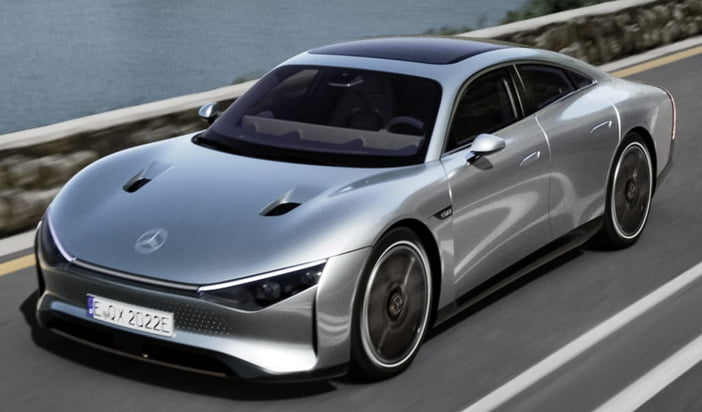
+++ MG has built much of its reputation on small, simple roadsters that were fairly affordable, but aspirational. This is something that the Chinese-owned iteration of the brand hasn’t been shy to emulate. And now a new MG sports car takes a step closer, as fresh leaks all but confirm that the brand is returning to its roots, with a small, probably all-electric roadster. The car could hit the roads in 2024 to coincide with MG’s centenary, possibly with an MGC EV badge, following parent firm SAIC filing a trademark for the name. Direct rivals will be few and far between, but the new car could give buyers of internal combustion-engined convertibles like the Mazda MX-5 and BMW Z4 a new avenue to explore. Back in 2017, MG unveiled its E-Motion Coupé concept. Designed to be a flagship all-electric coupé, the project now looks dead in the water. Attention has turned to a drop-top car based on last year’s Cyberster concept. It was successfully greenlit for production after a crowd-funding effort that saw over 5.000 potential buyers place money down to make it happen. MG could decide to name it after the concept, too, given that a trademark for ‘Cyber X’ has also been filed. London-based SAIC Design created the concept with plenty of eye-catching details, such as Magic Eye headlights that open when turned on, the Laser Belt line of LEDs along the side, and the squared-off Kammback tail. Leaked patent images reveal a production MG based on the concept is very much imminent, including plenty of the Cyberster’s design features. Don’t expect to see the concept’s yoke-style steering wheel, but the centre console with integrated touchscreen, wraparound driver’s display screen and even the Zero Gravity floating head restraints could all make production. The driver-centric two-cockpit layout could also feature. What’s less likely to be reflected in the production car are the concept’s 800 km range and 0-100 kph time of less than 3 seconds. But that’s not to say the Cyberster won’t offer up impressive stats. MG recently unveiled its Mulan hatchback for the Chinese market. This will come to Europe as the MG4 and is claimed to be capable of 0-100 kph in 4 seconds. It will be offered with rear-wheel drive on the SAIC Nebula pure-electric architecture, which would provide a perfect base for MG’s new sports car. Full specs for the Mulan have not been revealed, but some of its technology could transfer into the new roadster. The sports car’s powertrain is likely to be geared for performance rather than efficiency. But its proportions should result in a lighter kerbweight than MG’s other EVs, so we expect it to at least match the 440 km range of the ZS EV Long Range. It will depend on how much underfloor battery can be packaged beneath the passenger cell while still keeping the car low, however. +++
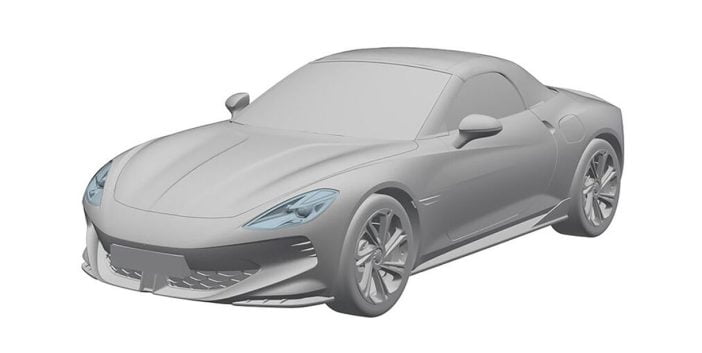
+++ With the new RANGE ROVER SPORT now revealed in full, attention now turns to the range-topping SVR variant. Testing of the forthcoming SVR is already well underway at the Nurburgring in Germany. There will be a host of visual tweaks at the front, with a more aggressive bumper, redesigned grilles and potentially new headlights. Elsewhere there are huge brake discs with what look like six-piston calipers at the front, while the large wheels are wrapped in Michelin Pilot Sport SUV tyres. It’s possible it will get an even more imposing roof spoiler than the regular Sport’s. The quad exhausts are the biggest departure, sitting either side of a new rear bumper. The Range Rover Sport first got a hot SVR version during the facelift of the second-generation model in 2015, powered by a 550 hp 5.0-litre Supercharged V8. We’re likely to see even more performance in the latest Sport SVR, the flagship utilising the same 4.4-litre twin-turbocharged V8 found in the BMW X5 M Competition. That engine is available in the latest full-size Range Rover with 530 hp, but the SVR is more likely to match the X5 M’s 625 hp output. It’s unlikely the SVR will utilise the 650 hp plug-in hybrid powertrain on the upcoming XM, as it would detract too much from BMW’s super SUV. We can also expect the new SVR to use the same eight-speed ZF automatic transmission found in the X5 M. Uprated suspension and larger brakes are a certainty. The new Sport sits on JLR’s MLA-Flex platform, allowing for plug-in hybrid and even full electrification. The standard Sport will be available with a pure-electric powertrain and given the instantaneous acceleration afforded by EVs, it’s possible the new SVR won’t be the fastest model within the Range Rover Sport lineup from 0 to 100 kph. The new model could well beat the old car’s 4.5 second 0-100 kph time and its 280 kph top speed, however. JLR’s ‘Dynamic Air Suspension’ should feature on the new SVR, using twin air chambers to reduce pitch and roll. A ‘Stormer’ handling pack is an optional extra on the Sport, adding an electronic active differential with torque vectoring by braking and four-wheel steering; a feature that is likely to be standard on the SVR. Given that the new Sport was revealed on 10 May, the SVR should be with us before the end of the year. Prices are likely to start from well over €200.000 in the Netherlands. +++
+++ TESLA ’s new car factories in Texas and Berlin are “losing billions of dollars” as they struggle to increase production because of a shortage of batteries and China port issues, chief executive Elon Musk said in an interview. “Both Berlin and Austin factories are gigantic money furnaces right now. Okay? It’s really like a giant roaring sound, which is the sound of money on fire”, Musk said. Musk said Tesla’s Texas factory produces a “tiny” number of cars because of challenges in boosting production of its new “4680” batteries and as tools to make its conventional 2170 batteries are “stuck in port in China”. “This is all going to get fixed real fast, but it requires a lot of attention”, he said. He said its Berlin factory is in a “slightly better position” because it started with using the traditional 2170 batteries for cars built there. He said the Covid-19-related shutdowns in Shanghai “were very, very difficult”. The shutdown affected car production not only at Tesla’s Shanghai factory, but also at its California plant, which uses some vehicle parts made in China, he said. Tesla plans to suspend most production at its Shanghai plant in the first 2 weeks of July to work on an upgrade of the site to boost output. “The past 2 years have been an absolute nightmare of supply chain interruptions, one thing after another, and we’re not out of it yet”, Musk said. Tesla’s overwhelming concern, he said, is “How do we keep the factories operating so we can pay people and not go bankrupt?” Musk said early this month he had a “super bad feeling” about the economy and that the company needed to cut staff by about 10% and “pause all hiring worldwide”. Earlier this week, he said a 10% cut in salaried staff at Tesla will occur over 3 months. Tesla earlier this year started production at the factories in Berlin and Texas, both of which are critical to the growth ambitions of the top electric car maker. Musk said he expected Tesla would start production of its Cybertruck electric pickup truck, which has been delayed, in mid-2023. +++
+++ TOYOTA is recalling nearly 3.000 examples of its brand-new BZ4X electric crossover to address a problem that can potentially result in wheel separation. According to the company, sharp turns or acceleration can cause the EV’s hub bolts to loosen, increasing the risk that a wheel could come off at speed. “No one should drive these vehicles until the remedy is performed”, Toyota said. Dealers will offer complimentary loaner to customers who cannot drive their cars while the issue is being investigated and a fix put in place. At this time, there is no prescribed remedy. “After low-mileage use, all of the hub bolts on the wheel can loosen to the point where the wheel can detach from the vehicle”, Toyota’s official statement said. “If a wheel detaches from the vehicle while driving, it could result in a loss of vehicle control, increasing the risk of a crash. The cause of the issue and the driving patterns under which this issue could occur are still under investigation”. The campaign covers 2.700 vehicles worldwide, of which 2.200 were headed to Europe, 260 to the United States, 20 to Canada and 110 to Toyota’s home market. The BZ4X and its twin, the Subaru Solterra, are both assembled at Toyota’s Motomachi facility. Subaru has not yet announced a corresponding recall. +++
